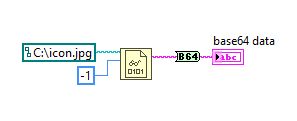

Note: Delete the appCreds.txt and the appbase64Creds.txt files after you finish. Locate and open appbase64Creds.txt in C:\temp, copy its contents, and then close the file.
#Base64 encoding postman windows
In Windows Explorer, right-click C:\temp, and then select CMD Prompt Here from the context menu.Įnter the following command to encode the client ID and client secret:Ĭopycertutil -encode appCreds.txt appbase64Creds.txt Save the file to C:\temp and name the file appCreds.txt. These are basic ways to upload a file via Postman.

Click 'binary' and then click 'Select File' to attach your file. In the 'Value' field, click 'Select File' and select the file to send via the POST request body. Note: If the value that is returned is broken into more than one line, return to your text editor and make sure that the entire results are on a single line with no text wrapping. Click 'Text', and then change it to say 'File'. Launch a terminal and enter the following command, replacing clientid:clientsecret with the value that you just copied. Place the client ID and secret on the same line and insert a colon between them: clientid:clientsecretĬopy the clientid:clientsecret line to the clipboard. Launch your preferred text editor and then paste the client ID and secret into a new file. Select the application that you want to use, and then on the General tab, copy the Client ID and Client secret. In the Admin Console, go to Applications > Applications.


Sign in to your Okta organization with your administrator account. When you finish encoding, you can then use the encoded client ID and secret in the HTTP Authorization header in the following format: 'authorization: Basic ' Use this section to Base64-encode the client ID and secret.
#Base64 encoding postman code
The Response code is 200 OK which points to a successful request.Base64-encode the client ID and client secret This has to be added as the value of the Authorization key in Postman in the format − basic cG9zdG1hbjpwYXNzd29yZA=. We will obtain an encoded text cG9zdG1hbjpwYXNzd29yZA= at the bottom of the page.
#Base64 encoding postman password
Enter the username (postman) and password (password) in the edit box in the format − postman − password as shown in the below image. Next, to add the credentials in the encoded format we shall take the help of a third party application having the link −. The username for this endpoint is postman and the password is password. The key should be Authorization and the value is the user credentials having the syntax as - basic. To carry out an encoded authentication, we have to choose the option No Auth from the TYPE dropdown in the Authorization tab and simultaneously from the Headers tab, we have to incorporate a new key-value pair. The TYPE dropdown in the Authorization tab, lists down all the Authorization types. In Postman, this is carried out under the Authorization tab. 1 Answer Sorted by: 1 In postman multiform you can upload a file by hovering over the field and selecting type as file. Thus authentication helps to identify the identity of a user and is applied for the secured APIs. This is done by authenticating the credentials of a user by the system. In Postman, sometimes we need to verify the eligibility of a user accessing a particular resource on the server.


 0 kommentar(er)
0 kommentar(er)
